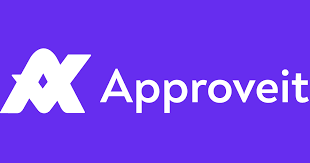Understanding Purchase Order Software QuickBooks
The integration of purchase order software quickbooks into your financial management system can significantly enhance efficiency and accuracy in your procurement processes. In today’s fast-paced business environment, managing purchases effectively is crucial for maintaining a healthy cash flow and inventory management. By understanding how purchase order software within QuickBooks can streamline these processes, business owners can make informed decisions that positively impact their operations.
What is Purchase Order Software?
Purchase Order (PO) software is a tool that helps businesses create, manage, and track purchase orders. It simplifies the procurement process by allowing users to generate POs quickly and efficiently, automate approvals, and monitor the status of orders. QuickBooks, a leading accounting software, integrates purchase order functionality that enhances its financial management capabilities.
Key Features of Purchase Order Software in QuickBooks
To maximize the benefits of using purchase order software, it is essential to understand its key features. QuickBooks offers various functionalities that help streamline procurement processes, including:
1. Easy Creation of Purchase Orders
QuickBooks enables users to create purchase orders quickly by filling in essential details like vendor information, item descriptions, quantities, and prices. This simplifies the process compared to traditional paper-based methods and reduces the risk of errors.
2. Automated Approvals
One of the most time-consuming aspects of the procurement process is obtaining approvals. Purchase order software can automate this workflow, allowing designated personnel to approve or reject POs digitally, which saves time and enhances accountability.
3. Real-time Status Tracking
With purchase order software in QuickBooks, businesses can track the status of orders in real-time. This feature provides insights into whether an order has been placed, approved, shipped, or received, enabling timely follow-ups and better inventory management.
4. Integration with Inventory Management
The integration of purchase order software with inventory management systems is crucial for businesses that need tight control over their stock levels. QuickBooks allows users to update their inventory automatically when purchase orders are received, ensuring accurate stock counts and preventing overstock or stockouts.
5. Enhanced Reporting and Analytics
QuickBooks provides robust reporting features that allow users to analyze their purchasing behavior and expenses. Users can generate reports on vendor performance, purchasing trends, and spending patterns, aiding in better decision-making and strategic planning.
Benefits of Using Purchase Order Software in QuickBooks
Implementing purchase order software within QuickBooks brings several benefits to businesses:
1. Increased Efficiency
By automating repetitive tasks such as order creation and approval, businesses can significantly increase their operational efficiency. Staff can focus on more strategic tasks rather than getting bogged down in paperwork.

2. Cost Control
Purchase order software promotes better budget management by allowing businesses to set spending limits and monitor expenditures closely. This ensures that financial resources are allocated effectively and reduces unnecessary overspending.
3. Improved Vendor Management
Using purchase order software helps businesses maintain better relationships with vendors by providing clear communication regarding orders and payments. It aids in building trust and promoting long-term partnerships.
4. Enhanced Compliance
Purchase order software can help businesses stay compliant with accounting and regulatory standards. By providing detailed records of purchases, businesses can ensure they meet internal and external audit requirements.
5. Scalability
As businesses grow, their procurement needs evolve. Purchase order software in QuickBooks is designed to scale alongside your business, accommodating increasing transaction volumes and complexities without losing efficiency.
Implementing Purchase Order Software in Your Business
Before implementing purchase order software in your QuickBooks system, consider the following steps:
1. Assess Your Needs
Evaluate your current procurement processes and identify areas that require improvement. Determine what features are most necessary for your business, such as approval workflows, reporting capabilities, or integrations with other systems.
2. Choose the Right Software
Select a purchase order software solution that integrates seamlessly with QuickBooks. Conduct research, read reviews, and possibly request demos to ensure you choose the right solution for your needs.
3. Train Your Team
Once you’ve implemented the software, ensure that your team is trained to use it effectively. Provide comprehensive training materials and sessions to help your employees understand the software’s capabilities.
4. Monitor and Optimize
Regularly review the effectiveness of your purchase order software. Gather feedback from users, evaluate performance metrics, and make necessary adjustments to optimize its use and contribute to your business objectives.
Conclusion
The integration of purchase order software QuickBooks into your procurement process can significantly enhance operational efficiency, financial control, and vendor relationships. By understanding its features and benefits, businesses can leverage this technology to stay competitive and meet their evolving needs. As the landscape of procurement continues to change, adopting innovative solutions like purchase order software will be key to success in managing orders and supporting overall business growth.
